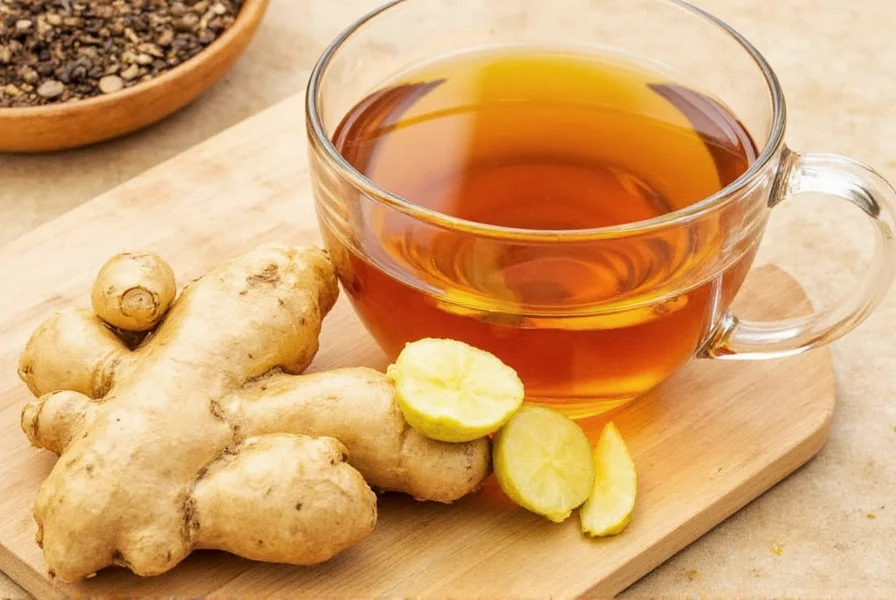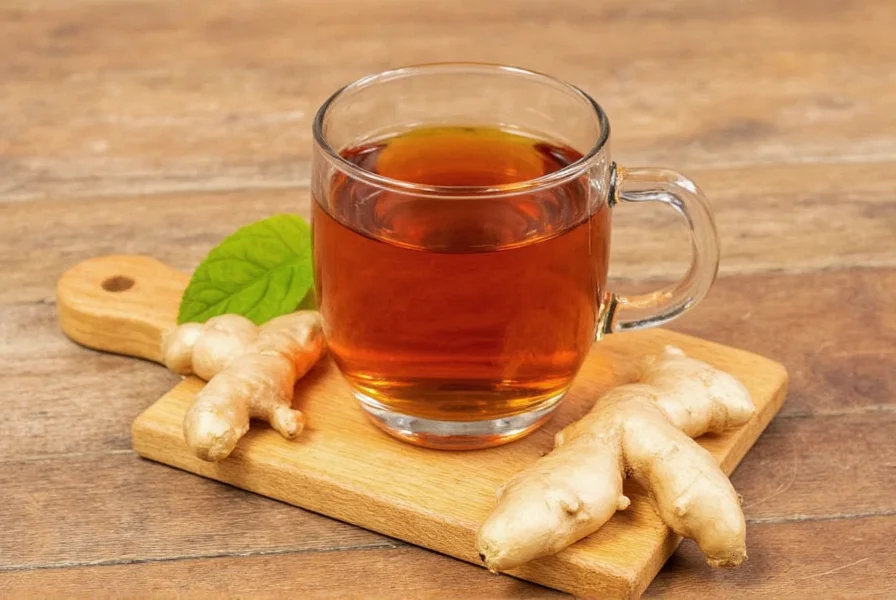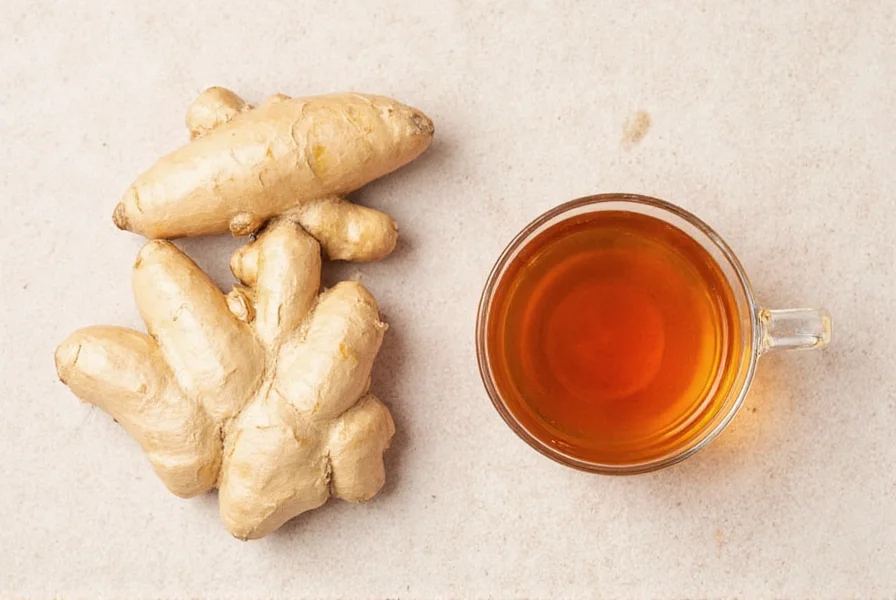When you choose tea with real ginger, you're selecting a beverage made from actual ginger root rather than artificial flavorings or minimal ginger extracts. This distinction matters significantly for both flavor profile and potential health benefits. Genuine ginger tea contains bioactive compounds like gingerols and shogaols that provide the characteristic spicy warmth and documented physiological effects.
Understanding Real Ginger vs. Artificial Ginger in Tea
The difference between tea with real ginger and products containing artificial ginger flavoring extends beyond mere taste. Authentic ginger tea uses either fresh, dried, or powdered ginger root as a substantial ingredient. In contrast, many commercial "ginger" teas contain only trace amounts of ginger or rely entirely on synthetic flavor compounds designed to mimic ginger's taste.
When examining tea with real ginger ingredients, look for specific indicators:
- Visible ginger pieces or fibers in the tea blend
- "Ginger root" or "Zingiber officinale" listed prominently in ingredients
- Spicy, warming sensation that develops as you drink
- Natural golden-yellow color when brewed
Products labeled as containing "natural flavors" often contain minimal actual ginger. True tea with real ginger typically lists ginger as one of the first ingredients, sometimes comprising 30-100% of the blend.

Evidence-Based Health Benefits of Genuine Ginger Tea
Research supports several health benefits specifically associated with tea made with real ginger root. A 2020 review published in Nutrients confirmed that ginger's bioactive compounds demonstrate anti-inflammatory and antioxidant effects when consumed in sufficient quantities.
Unlike artificial ginger flavorings, authentic ginger tea may help with:
- Digestive support - Ginger stimulates digestive enzymes and gastric motility
- Nausea relief - Particularly effective for morning sickness and motion sickness
- Inflammation reduction - Gingerols inhibit inflammatory pathways
- Cold and flu symptom relief - Warming properties soothe sore throats
These benefits require sufficient concentration of active compounds found only in genuine ginger. Most studies showing positive effects used preparations containing 1-3 grams of ginger root per serving - equivalent to a robust cup of properly brewed tea with real ginger.
| Benefit | Minimum Ginger Required | Evidence Level |
|---|---|---|
| Nausea relief | 1g fresh ginger | Strong clinical evidence |
| Digestive support | 0.5-1g dried ginger | Moderate clinical evidence |
| Inflammation reduction | 1.5g dried ginger | Promising preliminary evidence |
How to Identify Authentic Tea with Real Ginger Products
With so many products claiming ginger benefits, consumers need practical methods to verify authenticity. When selecting tea with real ginger, follow these evidence-based identification techniques:
- Examine ingredient lists - Look for "ginger root," "fresh ginger," or "dried ginger" as primary ingredients. Avoid products listing "natural flavors" as the sole ginger source.
- Assess visual characteristics - Authentic ginger tea blends contain visible ginger pieces, not just uniform tea leaves.
- Perform aroma test - Real ginger tea emits a spicy, warm scent rather than a one-dimensional sweet aroma.
- Conduct taste evaluation - Genuine ginger tea produces a warming sensation that builds gradually, not an immediate artificial spice.
- Check brewing results - Proper tea with real ginger creates a golden-yellow infusion with slight cloudiness from ginger compounds.
Organic certification can provide additional assurance, as synthetic flavorings are prohibited in certified organic products. However, not all authentic ginger teas carry organic certification, so ingredient analysis remains essential.

Optimal Preparation Methods for Tea with Real Ginger
To maximize both flavor and potential benefits from tea with real ginger, preparation technique matters significantly. Unlike artificial ginger teas that release flavor immediately, genuine ginger requires proper extraction of its bioactive compounds.
Follow these evidence-based brewing guidelines:
- Water temperature: Use water just below boiling (90-95°C/194-203°F) to preserve volatile compounds
- Steeping time: Minimum 8-10 minutes to extract sufficient gingerols
- Cover while steeping: Prevents evaporation of beneficial volatile oils
- Add acid: A squeeze of lemon juice can enhance extraction of certain compounds
For stronger tea with real ginger, consider these professional techniques:
- Cold infusion method: Steep ginger in cold water for 4-8 hours for smoother flavor
- Double extraction: First steep in cold water, then top with hot water for complete compound release
- Fresh ginger preparation: Grate or slice fresh ginger to increase surface area before brewing
Considerations When Consuming Tea with Real Ginger
While tea with real ginger offers numerous potential benefits, certain considerations ensure safe and effective consumption:
- Dosage: Most studies use 1-3 grams of ginger per serving; excessive consumption may cause heartburn
- Medication interactions: Ginger may interact with blood thinners and diabetes medications
- Pregnancy considerations: Consult healthcare providers about appropriate amounts during pregnancy
- Dental health: The acidity of ginger tea may affect tooth enamel with frequent consumption
Individual responses to tea with real ginger vary based on genetics, health status, and ginger sensitivity. Start with smaller servings to assess tolerance before increasing consumption.











 浙公网安备
33010002000092号
浙公网安备
33010002000092号 浙B2-20120091-4
浙B2-20120091-4